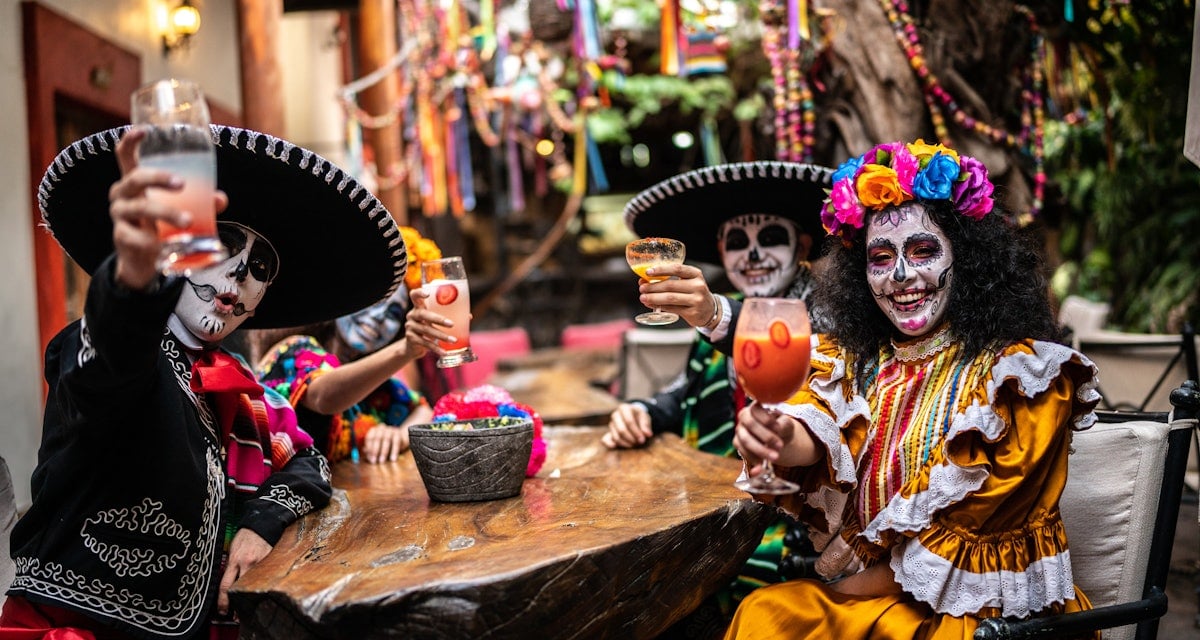Festivals & Rituals


Dia de Los Muertos
Author: Tan Sri Son | 09/05/2025
Día de los Muertos: Mexico’s Vibrant Festival Honoring the Spirits
In Mexico, death is not viewed solely with fear or sorrow but celebrated as a natural and integral part of life. One of the most vivid and culturally significant festivals reflecting this belief is Día de los Muertos—the Day of the Dead. Celebrated annually on November 1st and 2nd, this festival honors deceased loved ones and welcomes their spirits back to the world of the living through colorful rituals, offerings, and communal gatherings.
Origins and Cultural Significance
Día de los Muertos has deep roots that trace back thousands of years to indigenous civilizations such as the Aztecs, Mayans, and other pre-Hispanic cultures. These ancient peoples held cyclical views of life and death and believed that the dead maintained an active presence among the living. When Spanish colonizers arrived in the 16th century, indigenous customs blended with Catholic traditions, resulting in the modern celebration observed today.
The festival is a time to remember and celebrate ancestors, emphasizing joy and reunion rather than mourning. Families create altars, or ofrendas, decorated with photographs, favorite foods, marigold flowers, candles, and sugar skulls, inviting the spirits to return and partake in the festivities.
Rituals and Traditions
Throughout Mexico, Día de los Muertos is marked by a variety of practices that honor the dead and strengthen community bonds:
Ofrendas (Altars): Central to the celebration, altars are personalized shrines that include offerings like pan de muerto (a special bread), fruits, drinks, and objects meaningful to the deceased. Marigolds, known as cempasúchil, are believed to guide spirits with their vibrant color and scent.
Visits to Cemeteries: Families visit graveyards to clean and decorate tombstones, often spending the night there. They share stories, music, and food, creating a festive atmosphere where the living and the dead come together.
Calaveras and Catrinas: Sugar skulls, or calaveras, symbolize death playfully and are intricately decorated. The elegant skeletal figure known as La Catrina, created by Mexican artist José Guadalupe Posada, has become an iconic representation of the holiday, reminding everyone that death is the great equalizer.
Parades and Public Festivities: In many cities, especially Mexico City, elaborate parades, dances, and performances celebrate the dead, blending indigenous rituals with contemporary artistic expression.
Spiritual Beliefs and the Connection to the Supernatural
The Day of the Dead embodies a unique spiritual understanding of ghosts and the afterlife. The festival assumes that the spirits of the departed return once a year to be reunited with their families, reinforcing bonds that transcend mortality. This belief in the active presence of spirits is not frightening but comforting, reflecting respect, love, and acceptance of death.
The festival also emphasizes that spirits can be honored and appeased through remembrance and ritual, preventing them from becoming restless or malevolent. Through celebration, the community maintains harmony between the physical and spiritual worlds.
Global Influence and Modern Celebrations
Día de los Muertos has grown beyond Mexico’s borders, inspiring celebrations around the world and featuring prominently in popular culture, such as in the animated film Coco. Its vibrant colors, heartfelt rituals, and positive approach to death resonate universally, inviting people everywhere to reflect on mortality with openness and reverence.
Conclusion
Mexico’s Day of the Dead is a profound example of how cultural beliefs shape our understanding of ghosts, spirits, and the afterlife. Far from a festival of fear, it is a joyous celebration of memory, love, and continuity. Through its colorful rituals and spiritual depth, Día de los Muertos teaches a valuable lesson: that death is not an end but a passage, and that honoring the dead keeps their spirit alive in the hearts of the living.
Coming Soon
We're on a mission ........................

Discover our full library of The Theos e-magazines and articles — all completely free to read.
We are a crowdfunded publication, dedicated to sharing knowledge, reflection, and theology with readers around the world.
Your support and donations help us continue offering open, accessible content for everyone, everywhere.
Join us in keeping wisdom free.
@ the theos since 2023 © 2023. All rights reserved.